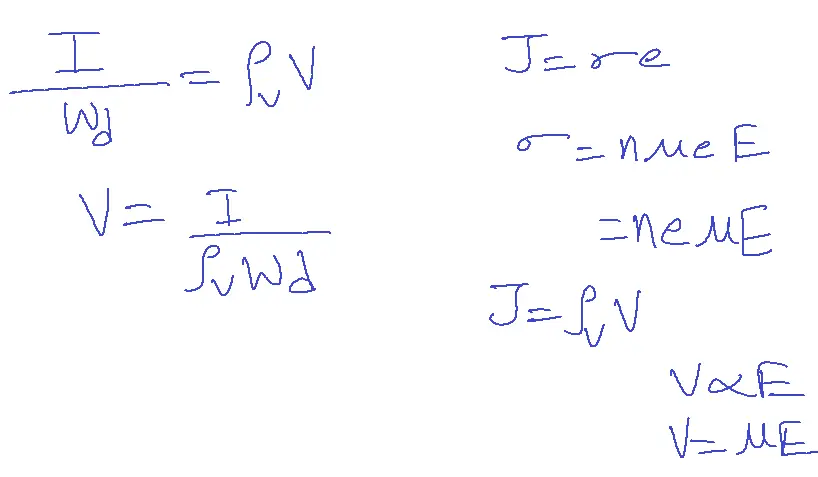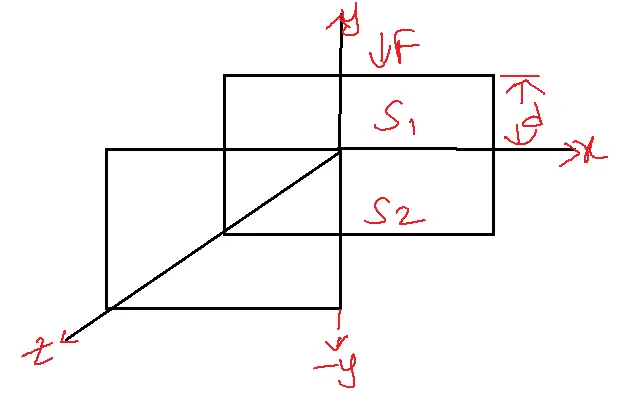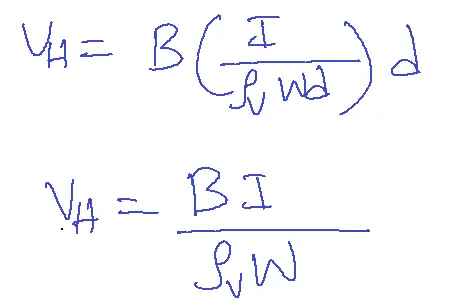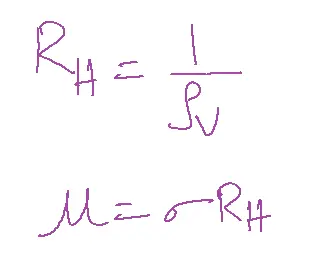The Hall Effect is a fundamental phenomenon in physics, discovered by Edwin Hall in 1879. It describes the production of a voltage difference across a conductor when the hall effect is placed in a magnetic field perpendicular to the current flow.
A current-carrying specimen is placed in the transverse magnetic field ‘B’ then electric field ‘E’ is induced in this specimen perpendicular to both I and B. This phenomenon is called the Hall effect.
At equilibrium, the force exerted on electrons due to the Hall effect will balance the force due to the magnetic field.
FH= eE due to the Hall effect(Electric field)
FM= BeV → Magnetic field
eE=BeV
V-drift velocity
E=BV
J=I/A=I/wd


E=V/d
VH=Ed
=BVd

B is Magnetic flux density
VH= Hall voltage= BI/£VW
W= width of the specimen
RH= WVH/BI
RH= Hall coefficient.
RH=1/n.e

Table of Contents
Key Components
1. Conductor: A material with high electrical conductivity, such as copper or silicon.
2. Magnetic Field: A magnetic field that is perpendicular, which an electromagnet or magnet may produce.
3. Current: The flow of electrons through the conductor.
Importance of Hall Effect
1. Hall effect gives information about the type of specimen P-type or n-type
2. It gives information about electron concentration or hole concentration.
3. It can determine whether the specimen is metal, insulator, or semiconductor.
4. Magnetic flux density can be found using the Hall effect.
5. Power in the EM wave can be measured using the Hall effect.
Advantages of the Hall Effect
1. Non-Contact Measurement: This effect sensors can measure magnetic fields without physical contact, reducing wear and tear.
2. High Sensitivity: These sensors can detect small changes in magnetic fields, making them suitable for precise applications.
3. Low Power Consumption: These sensors require minimal power to run making them suitable for battery-powered devices.
4. Solid-State Reliability: These sensors are solid-state devices, offering high reliability and a long lifespan.
5. Immunity to Contamination: These sensors are immune to contamination, dust, and moisture.
Disadvantages of the Hall Effect
1. Temperature Dependence: These sensors can be affected by temperature changes, requiring temperature compensation.
2. Noise Sensitivity: These sensors can be sensitive to electromagnetic noise, requiring shielding or filtering.
3. Limited Dynamic Range: These sensors have a limited dynamic range, making them less suitable for applications with large magnetic field variations.
4. Offset Voltage: These sensors can have an offset voltage, requiring calibration or compensation.
5. Cost: These sensors can be more expensive than other magnetic field sensors.
6. Limited Frequency Response: These sensors have a limited frequency response, making them less suitable for high-frequency applications.
7. Magnetic Hysteresis: Magnetic hysteresis can affect these sensors, requiring calibration or compensation.
Applications of the Hall Effect
1. Magnetic Field Sensors: These sensors detect magnetic fields in applications like proximity switches, position sensors, and current sensors.
2. Electronic Devices: This effect is used in electronic devices like keyboards, smartphones, and automotive systems.
3. Medical Devices: These sensors are used in medical equipment like MRI machines, insulin pumps, and portable defibrillators.
4. Aerospace: These sensors are used in aircraft and spacecraft for navigation, control systems, and magnetic field measurements.
5. Automotive Systems: These sensors are used in automotive systems like anti-lock braking systems (ABS), traction control systems (TCS), and electronic stability programs (ESP).
6. Industrial Automation: In industrial automation, these sensors are utilized for current, position, and speed sensing.
7. Consumer Electronics: A few examples of consumer electronics that use these sensors are gaming controllers, joysticks, and virtual reality devices.
8. Smart Homes: These sensors are used in smart home systems for lighting control, security systems, and home automation.
9. Wearables: These sensors are used in smartwatches, fitness trackers, and health monitors.
10. Scientific Instruments: These sensors are used in scientific instruments like magnetometers, spectrometers, and particle accelerators.
FAQs
1. What is the Hall effect?
- The Hall effect is a phenomenon where a voltage (Hall voltage) is generated across a current-carrying conductor when placed in a magnetic field perpendicular to the current flow.
- This voltage is directly proportional to the magnetic field strength and the current.
2. How does the Hall effect work?
- When a current flows through a conductor in a magnetic field, the Lorentz force acts on the charge carriers (electrons or holes), deflecting them towards one side of the conductor. This charge separation creates an electric field (Hall field), resulting in the Hall voltage.
3. What are the applications of the Hall effect in EDC?
- The Hall effect is used in various electronic devices and circuits, such as:
- Hall effect sensors: Applications like proximity sensing, position sensing, and current sensing rely on these sensors to detect and measure magnetic fields.
- Hall effect switches: These switches use the Hall effect to detect the presence of a magnetic field and trigger a switching action, commonly used in keyboards, brushless DC motors, and automotive systems.
- Magnetometers: Magnetometers measure magnetic field strength and direction, finding applications in navigation, compasses, and geophysical surveys.
4. What factors affect the Hall voltage?
- Several factors impact the Hall voltage:
- Magnetic field strength: A stronger magnetic field leads to a higher Hall voltage.
- Current: A higher current through the conductor results in a higher Hall voltage.
- Conductor thickness: A thinner conductor generates a larger Hall voltage.
- Hall coefficient: This material-specific property determines the magnitude of the Hall voltage for a given magnetic field and current.
5. What are the advantages and disadvantages of using the Hall effect in EDC?
- Advantages:
- Non-contact sensing: No physical contact is required, making it suitable for harsh environments and long-term reliability.
- Wide range of applications: Used in various electronic devices and circuits for sensing, switching, and measurement.
- Solid-state construction: No moving parts, leading to increased durability and longevity.
- Disadvantages:
- Temperature sensitivity: The Hall coefficient can vary with temperature, affecting sensor accuracy.
- Offset voltage: Calibration is necessary to account for the possibility of a small voltage appearing even when no magnetic field is present.
